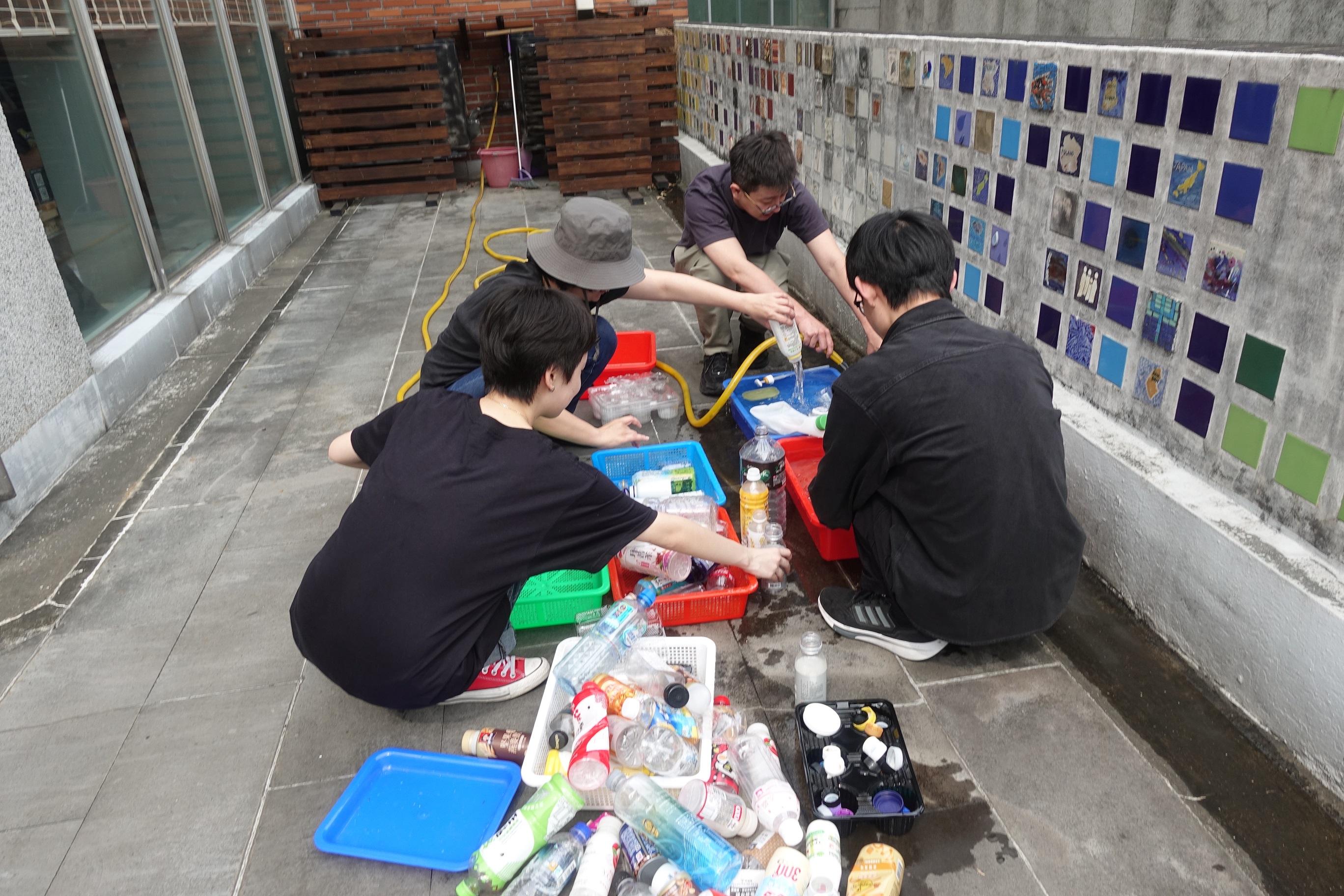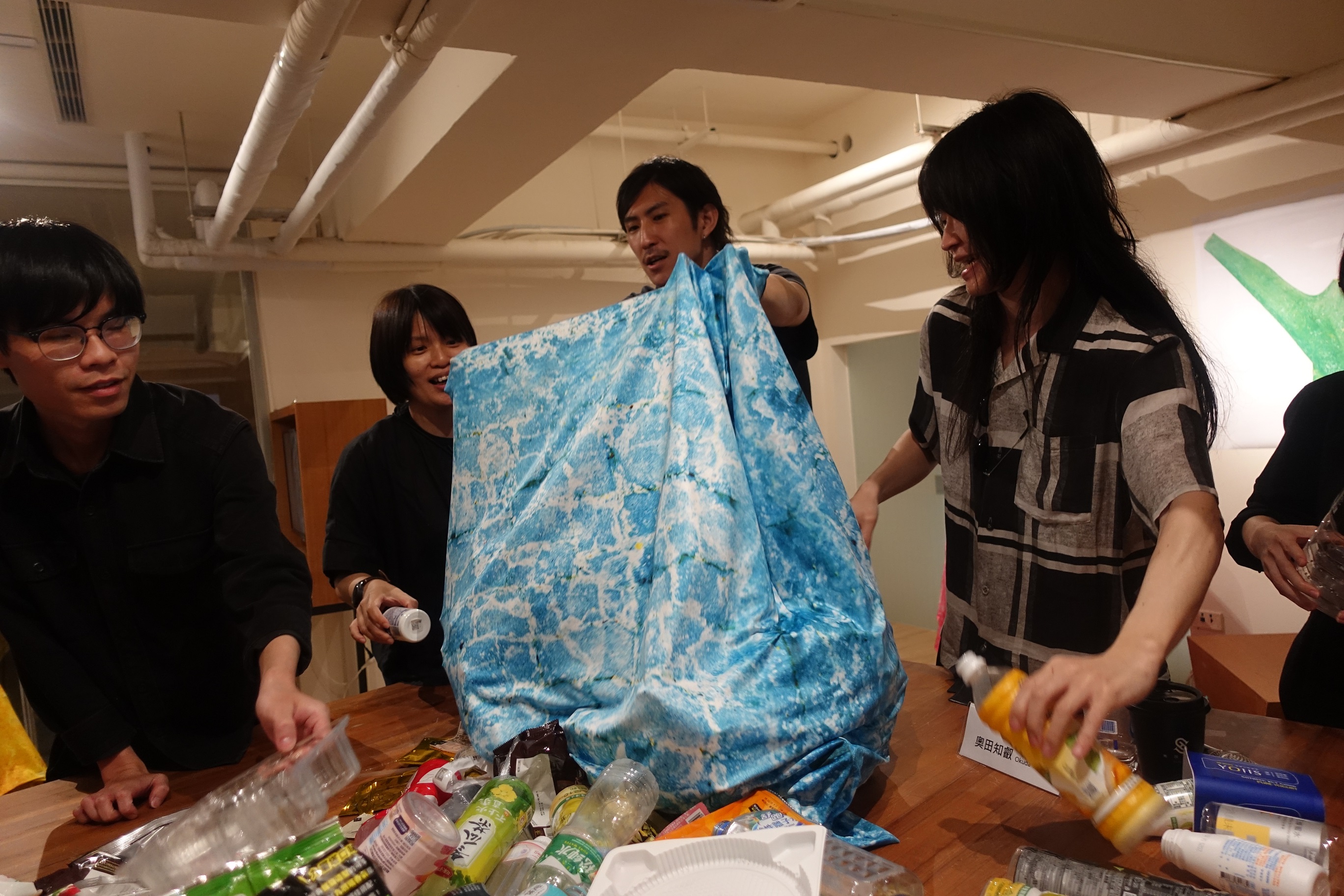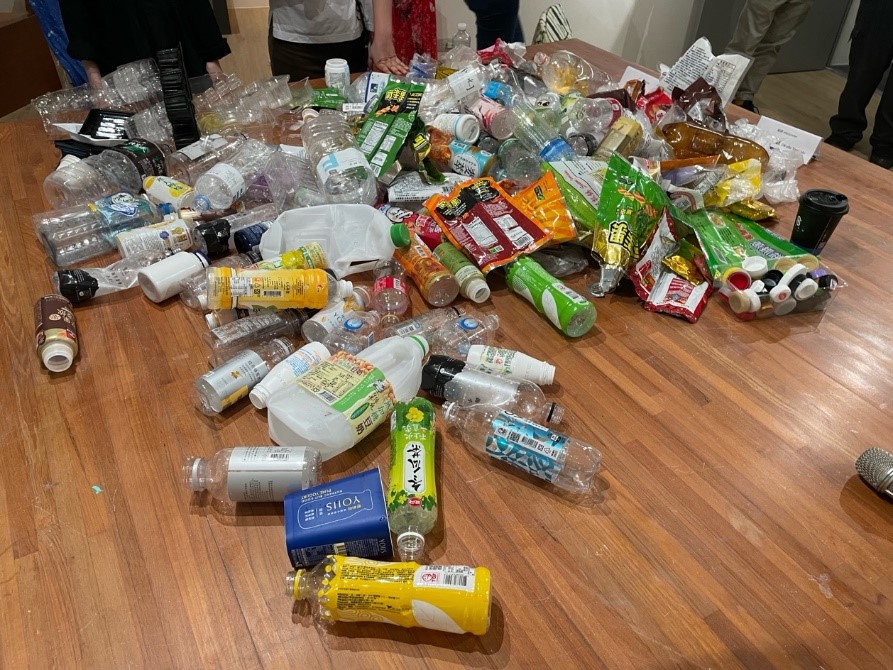2025.07.11
April 18th, 2025 TEA+ Residency Exchange Program — Tsuyoshi Anzai “Giant Micro Plastic” Workshop

Artist|Tsuyoshi Anzai
Interpreter|Okuda Tomoaki
Date|Friday, April 18, 14:00–15:30
Meeting Point|4F Lobby, Kuandu Museum of Fine Arts, Taipei National University of the Arts (TNUA)
Report by TSAI Yu-Fan
The “TEA+ Residency Exchange Program” annually selects one to three artists, musicians, performers, or researchers from among the alumni of Taipei National University of the Arts (TNUA) and Tokyo University of the Arts (Tokyo Geidai) to participate in a residency exchange lasting approximately one to three months.[1] The first artist-in-residence for 2025, Tsuyoshi Anzai, is a kinetic and video artist whose practice includes kinetic sculptures made from household objects and sculptural works composed of marine plastic debris.[2]
Arriving at TNUA in March for a 45-day residency, Anzai set out to investigate pollution caused by marine waste and microplastics in Taiwan. His project, “Giant Micro Plastic,” aims to transform microplastic pollution into commemorative artworks, thereby raising public awareness of environmental issues. In the “Giant Micro Plastic” workshop held on April 18, Anzai invited participants to join in cleaning and sorting everyday plastic recyclables, while also engaging in discussions about plastic use, recycling, and resource management. The session culminated in collectively filling cushion covers with cleaned plastic waste.



During the cleaning session, Anzai and the participants poured collected plastic recyclables into basins, washed, dried, and sorted them. He noted, “In Japan, bottle bodies, caps, and plastic films must be separated during recycling.” Participants responded that in Taiwan, recycling practices vary based on individual habits—sparking a broader discussion about the recycling standards. After the cleaning process, the group moved to Anzai’s studio, where the plastics were laid out on a table to air-dry. Anzai explained, “What we just did outside—washing the plastics—is part of my daily routine here.” He then shared his experience of collecting microplastics along the coastline and offered knowledge about recycling practices, such as the symbols found on the bottoms of bottles indicating plastic type and the number of times a material has been recycled.
He concluded this segment by initiating a group discussion on what should happen to the plastic waste after the exhibition ends. Participants proposed a range of ideas: some suggested that the museum and artist could offer the recycled materials as gifts to visitors; others recommended donating them to recycling organizations such as Tzu Chi. Another idea was to further process and install the Giant Micro Plastic Cushion as an artwork on the TNUA campus, alongside its many existing public art pieces, most of which are stone sculptures. Participants with artistic backgrounds proposed inviting students and faculty from TNUA’s Studio Art Program to collaboratively explore new ways of reusing the plastic materials in creative projects. Anzai emphasized a critical and recurring question faced by museums during exhibition transitions: “The most important concern lies in how to handle the recycled plastics after the exhibition ends,” highlighting a practical and ongoing dilemma.
In the final stage of the workshop, Anzai invited participants to stuff the freshly cleaned plastic bottles into a cushion cover he had created. The light-blue beanbag quickly became plump and sculptural. He adjusted its shape, transforming it into a large-scale sculpture, which he then placed prominently on the main studio table.
From cleaning and discussing plastic waste to repurposing it as sculptural filling, Tsuyoshi Anzai used the workshop as a platform to share his daily artistic practice with participants. In today’s rapidly developing society, the production of waste may be inevitable and continues to shape our daily lives. His workshop invites a collective reexamination of the things we discard and asks how we might confront this as a shared reality of contemporary life.
[1] TEA+. “About TEA+.” TEA+, https://t2ea.art/zh/about. Accessed 13 May 2025.
[2] Anzai, Tsuyoshi. “About.” Tsuyoshi Anzai, https://an2ai.net/about/. Accessed 13 May 2025.
Profile

Tsuyoshi Anzai
Tsuyoshi Anzai is a Japanese contemporary artist based in Chiba. He explores the interplay between human and non-human perspectives by working with ready-made plastic objects, including everyday items and waste. His work removes the original functions and meanings of these artificial objects, prompting viewers to reconsider their relationship with the material world. Anzai's kinetic sculptures, crafted from everyday items, move in unexpected ways, challenging the boundary between animate and inanimate. He also creates sculptures from plastic debris collected on beaches, imagining them as relics studied by non-human archaeologists in a distant future. His work has been exhibited at the Ludwig Museum (Budapest), 21st Century Museum of Contemporary Art (Kanazawa), Museum of Fine Arts, Houston, and Künstlerhaus Bethanien (Berlin).
- Participants
- Tsuyoshi Anzai
- Date
- 2025.07.11